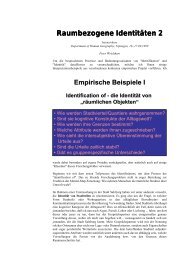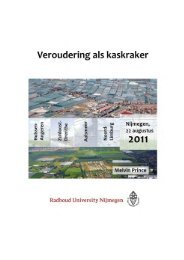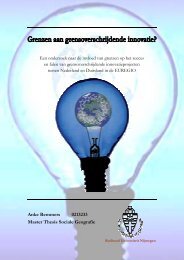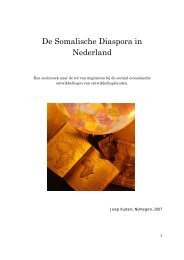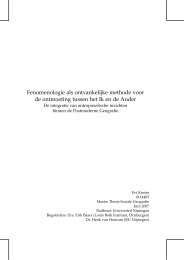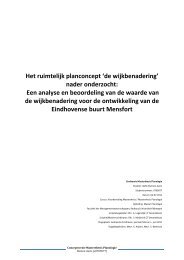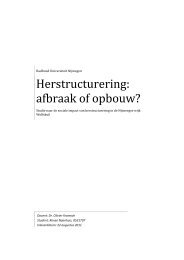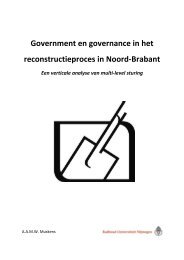Trading with the enemy in Mitrovica, Kosovo. - RUhosting
Trading with the enemy in Mitrovica, Kosovo. - RUhosting
Trading with the enemy in Mitrovica, Kosovo. - RUhosting
Create successful ePaper yourself
Turn your PDF publications into a flip-book with our unique Google optimized e-Paper software.
“Because of such dissatisfactions, <strong>the</strong> local Serb peasants were often openly hostile to <strong>the</strong> colonists: one<br />
official <strong>in</strong> charge of <strong>the</strong> colonization programme <strong>in</strong> <strong>Kosovo</strong> noted <strong>in</strong> 1928 that <strong>the</strong>y tended to form a 'united<br />
front <strong>with</strong> <strong>the</strong> Albanians aga<strong>in</strong>st <strong>the</strong> settlers'”. -Malcolm, 2002<br />
While <strong>Kosovo</strong> may not have been a rose garden for Serbian colonists, for <strong>the</strong> local Albanian population <strong>the</strong><br />
situation also worsened.<br />
“From 1935 onwards, a wave of confiscations of land from Albanians built up, on <strong>the</strong> basis of a new rule<br />
that all land should be treated as state property unless <strong>the</strong> farmer had a Yugoslav document to prove his<br />
ownership – someth<strong>in</strong>g that had hardly ever been issued to Albanians. In just one example of this process,<br />
<strong>the</strong> entire Albanian population of twenty-three villages <strong>in</strong> upper Drenica (6,064 people) was dispossessed <strong>in</strong><br />
1938. The official policy was to allow such people only 0.4 hectares per family member. As a Serbian policy<br />
document of <strong>the</strong> previous year noted: 'This is below <strong>the</strong> m<strong>in</strong>imum for subsistence. But that is and has been<br />
our aim: to make <strong>the</strong>ir life impossible, and <strong>in</strong> that way to force <strong>the</strong>m to emigrate.'” -Malcolm, 2002<br />
Several policy measures were taken to force or at least motivate Albanians to emigrate out of <strong>Kosovo</strong>, apart<br />
from not recognis<strong>in</strong>g Ottoman land deeds. Police harassment <strong>in</strong>creased severely, and mosques and<br />
graveyards were destroyed or transformed <strong>in</strong>to someth<strong>in</strong>g else such as stables. These policies were partly<br />
successful as estimates places <strong>the</strong> total number of Albanians emigrat<strong>in</strong>g out of <strong>Kosovo</strong> <strong>in</strong> <strong>the</strong> period between<br />
<strong>the</strong> two world wars between 90.000 and 150.000 (Malcolm, 2002).<br />
This colonisation programme and o<strong>the</strong>r policy measures to adjust <strong>the</strong> balance between <strong>the</strong> Albanian and<br />
Serbian population <strong>in</strong> <strong>Kosovo</strong> ended when <strong>the</strong> second world war arrived <strong>in</strong> <strong>Kosovo</strong>. Yugoslavia<br />
unconditionally surrendered to <strong>the</strong> German forces on <strong>the</strong> 17 th of April 1941 and <strong>Kosovo</strong>'s territory was<br />
partitioned between Italy and Germany. Albania was already ruled by Italy and now most of <strong>Kosovo</strong>'s<br />
territory was simply added to this. The Germans decided only to keep <strong>the</strong> nor<strong>the</strong>rn part of <strong>Kosovo</strong> –<br />
<strong>Mitrovica</strong> and up – where <strong>the</strong> valuable Trepça m<strong>in</strong>e was located. Parts of south-eastern Serbia, most of<br />
Macedonia and a small eastern strip of <strong>Kosovo</strong> were annexed by Bulgaria. <strong>Kosovo</strong> was added to Albania <strong>in</strong><br />
<strong>the</strong> hope of its occupiers that this would keep <strong>the</strong> Albanians quiet. All <strong>in</strong>habitants of Italian-occupied<br />
<strong>Kosovo</strong>, <strong>in</strong>clud<strong>in</strong>g Slavs, became Albanian citizens by 1942. Also, <strong>the</strong> Italians <strong>in</strong>vested <strong>in</strong> <strong>in</strong>troduc<strong>in</strong>g<br />
education <strong>in</strong> <strong>the</strong> Albanian language, open<strong>in</strong>g many new schools. This strategy seemed to work, because both<br />
resistance movements that existed <strong>in</strong> Yugoslavia, <strong>the</strong> Četniks and <strong>the</strong> communists, were particularly weak <strong>in</strong><br />
<strong>Kosovo</strong>. The biggest reason for this was however that <strong>the</strong>y were seen by most Albanians as almost<br />
exclusively Slav-based organisations. There was not really a clear stand on <strong>the</strong> occupy<strong>in</strong>g powers, sometimes<br />
<strong>the</strong>re would be collaboration, sometimes opposition. Relations between Albanians and Serbs played a large<br />
role <strong>in</strong> this:<br />
28



